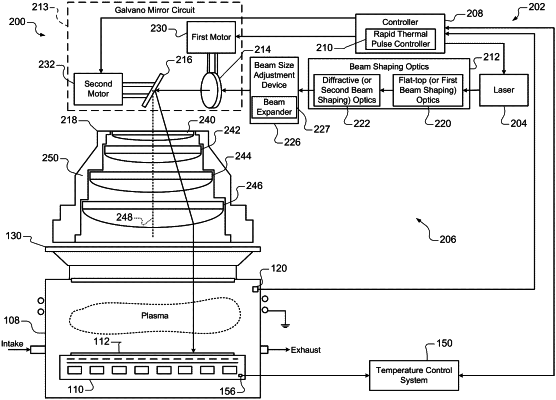| CPC H01L 21/67115 (2013.01) [C23C 16/45544 (2013.01); G02B 27/0927 (2013.01); G02B 27/0944 (2013.01); G02B 27/0955 (2013.01); G02B 27/30 (2013.01); G02F 1/11 (2013.01); H01J 37/321 (2013.01); H01J 37/32449 (2013.01); H01J 37/32715 (2013.01); H01L 21/67069 (2013.01); H01J 2237/332 (2013.01); H01J 2237/334 (2013.01)] | 26 Claims |

|
1. A substrate processing system comprising:
a processing chamber;
a substrate support disposed in the processing chamber and configured to support a substrate;
a laser configured to generate a laser beam;
a collimating assembly comprising a plurality of lenses or mirrors arranged to direct the laser beam at the substrate to heat an exposed material of the substrate, wherein the plurality of lenses or mirrors are configured to direct the laser beam in a direction within a predetermined range of being perpendicular to a surface of the substrate; and
a controller configured to perform a rapid thermal annealing process including (i) generating a control signal to modulate the laser beam to subiect the exposed material to a plurality of thermal energy pulses, and (ii) allowing the exposed material to cool between consecutive ones of the plurality of thermal enemy pulses.
|